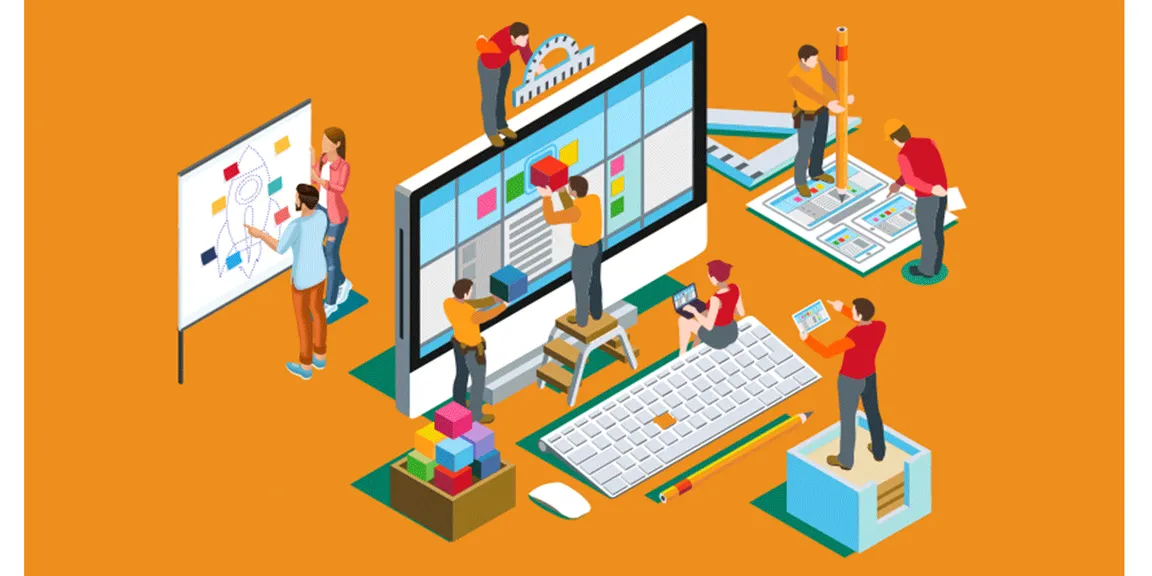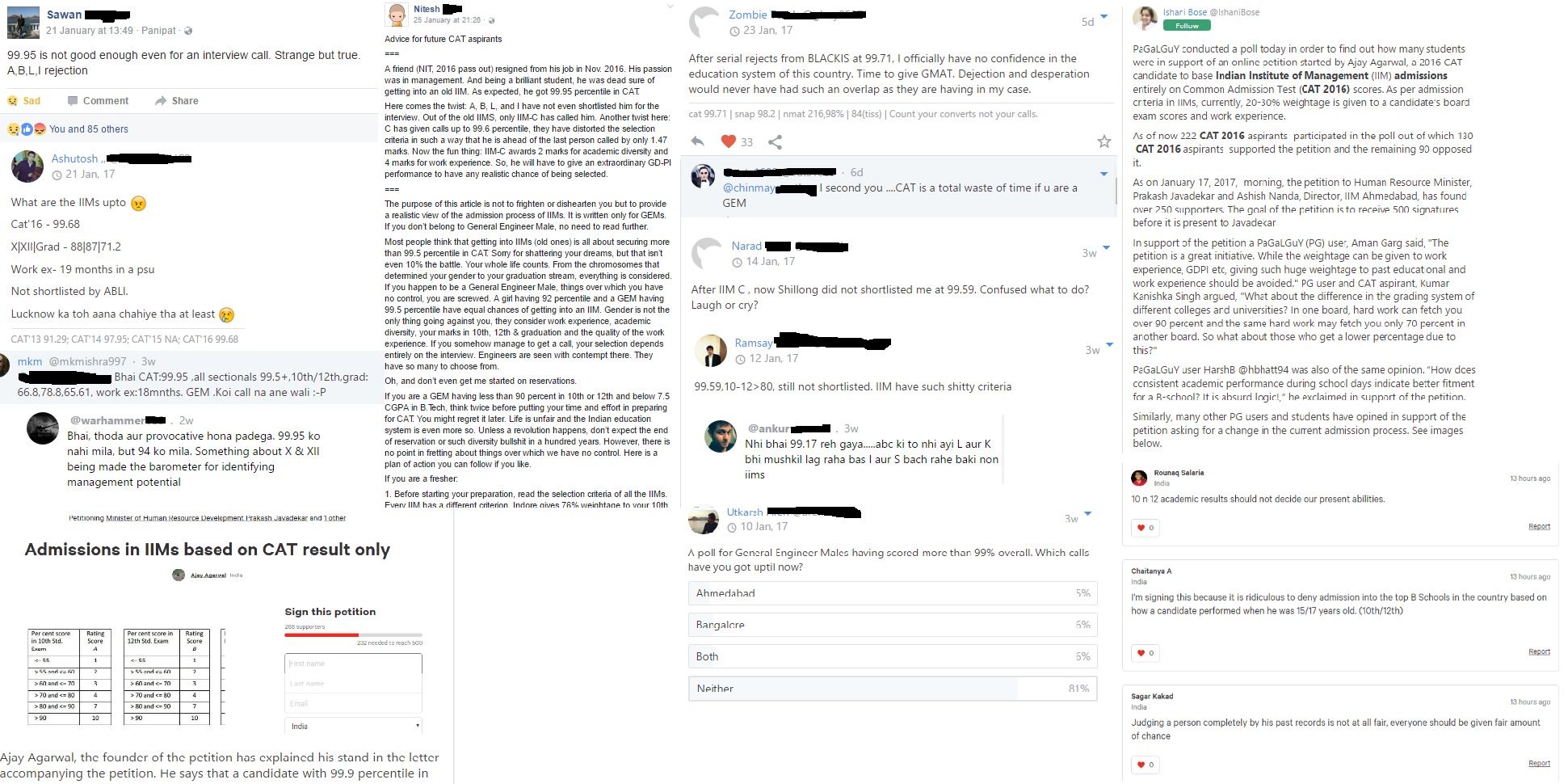

How Much Does It Cost to Make a Website from Scratch
It’s been eight years since we entered the market as an outsourcing software development company. “How much does it cost to make a website?” 一 has been a common question we’ve received over these years. It’s essential that clients know what they’re paying for when hiring a software development company and how they calculate rates. In this guide, we tell you about the real costs of custom software and website development at Steelkiwi and factors that influence the price.
The type of your website influences the price for creating a website
Not all websites are of the same complexity. A website to publish information about your company or business will take a lot less time to develop than an eCommerce website, for example. To see how prices for website design for businesses are set, we’ll show you four different types of websites — small, medium-sized, large, and eCommerce — and find out how the number of pages and functionality influences the price.
Small business websites
Not every business needs a multi-page website. Sometimes, just a one-page site is enough to promote your company, products and services, short-term offerings, product launches, and one-time events. The page can also contain a product description, contact information, social media links, and a contact form or questionnaire. Apart from single-page websites, there are microsites that have multiple pages. All small websites are informational: they inform visitors about your business. Usually, these websites don’t take lots of time, money, and brainpower and are a good option for companies that are short on budget but want to market themselves.
At Steelkiwi, we developed a one-page website to introduce our word guessing game Alias. This page tells users about the game. It also provides links to Google Play and the App Store to download the app. It took us 240 hours to create the Alias website with interactive design and custom animations that help explain the rules.
- UI and UX design: 50 hours
- Frontend development: 130 hours
- Backend development: 60 hours
Medium-sized business websites
Medium-sized websites consist of a few dozen pages and aim at marketing services and goods, attracting and converting visitors, increasing brand awareness, and building loyalty through a portfolio, customer testimonial page, services page, and contact us page. The price for developing a custom business website depends on the number of pages and features.
Take our Steelkiwi website as an example. It’s broken down into five categories: company, projects, services, industries, and blog. Each category helps build a picture of our company. The features we developed include search functionality, social media integration, a content management system, testimonials, a newsletter signup form, a blog, and CTA buttons. It took us approximately 500 hours to build the Steelkiwi website. As our company grows, so does our site. To keep it fresh, we’re constantly improving and updating it. You’ll also need to update your site if you want to stay competitive.
Large business websites
Large businesses need informative sites that contain hundreds if not thousands of pages. The best examples of large websites are portals designed to provide a single access point to a broad range of company-related data and services. Since these websites are content-heavy, the information provided is categorized and users can find what they need via smart search and filters.
One great example of a business portal is the General Electric website. This US-based international conglomerate operates across thirteen business segments including healthcare, lighting, and transportation. The GE website contains information about each of their business divisions. To clearly present information about their services, GE broke the website down into segments. By choosing a field — healthcare, for example — you’re redirected to web pages connected only with that field. Large sites like GE take lots of time to develop as they contain a bunch of pages and usually provide advanced functionality such as a CMS, search, filtering, and a blog.
eCommerce websites
eCommerce sites differ greatly from other websites because of the elements that are designed to buy and sell goods. The cost of developing an eCommerce site depends on what you want it to do. Some online marketplaces have several million items and functionality such as personal accounts and customer reviews. Other eCommerce platforms don’t require these features; they need just a small directory, a shopping cart, and online payments. The more items, functionality, and traffic you have, the more expensive your website will be.
- How many products or services does your website sell?
- How many categories of products or services do you offer?
- Do you need a shopping cart?
- Do users pay on your platform?
- Do you accept multiple currencies?
- Do you notify users about new products, shipments, and deliveries?
- What happens when orders are cancelled or returned?
One of the eCommerce solutions we’ve created is Roman-Mayer, a website for a watch and jewelry store in Switzerland. Our client asked us to do a full website redesign. It took us 615 hours to build search by category and implement multi-language support for English, French, and Italian. To convey elegance and luxury, we used exquisite soft colors and chic fonts. We let customers create wishlists and book in-store appointments. Additionally, we built a control panel to let admins easily upload CSV files with product information.
Factors that affect website costs
Estimating a website properly is tough. Every website project is different, and so is the price. Is it an MVP? Or is it a custom website full of functionally? Content, design, and functionality all influence the price for creating a website.
Static vs dynamic websites
Сontent is a vital factor contributing to the cost of your website. In terms of content, all websites are either static or dynamic.
- Static websites — content is fixed and the information displayed is the same for each visitor. These websites serve informational purposes and have no interactive features such as user-generated reviews, automatic subscriptions, and live chats. Content can’t be added or changed by users or admins. The only way to change it is in the code. Brochure sites are examples of static websites, where companies only tell customers about their company and its products or services. Static sites are good for small businesses that want to create an online presence with little money and time.
- Dynamic websites — content is generated in real time based on different factors such as a user’s country, time zone, and preferences. Dynamic features include a content management system, forums, registration, and login.
Static or dynamic? Check out some popular requirements for websites and find out whether a static or dynamic site is best for you.
How does the choice between a static and dynamic website affect the price?
When building a static website, there’s no need for backend development. That’s why they’re cheaper and hosting costs are a bit lower. Dynamic websites let you strengthen relationships with your users via features like chat, discussion boards, and forums. They also let you manage content. However, these websites take more time to develop since they’re connected to the server and require backend development. The price for dynamic websites varies depending on the functionality you need.
In addition, the price for your website depends on how many pages you need. The more pages, the longer it’ll take to develop.
Website design cost
The price for your website development also depends on the design. With design, you can create a strong brand identity for your company to enhance the relationship between you and your customers. Brand identity defines how users perceive your business. To build a powerful brand identity, you need to spend time on design. Consider all details from fonts and color palette to navigation and graphical elements.
Have a look at a project with complex designs that we’ve recently developed. Qravity is a collaboration, distribution, and monetization platform for creative teams to create entertainment such as music, movies, and games. Our UI/UX team spent 1500 hours creating a custom design for the Qravity website that included detailed wireframes, structure, logic, and the design itself. Additionally, we built a GUI kit that comprised the color palette, typography, and other components. For the homepage, we created a great animation with moving blocks and elements and effective CTAs to encourage newcomers to sign up. To be identifiable, we created a key ingredient — a logo. The logo underwent six iterations, and we designed it far beyond a beautiful picture but created a logo that embodies the main essence of the platform.
How does website design affect the price? Great design helps you capture users’ attention, but it’ll cost you. The more custom animations, illustrations, and graphics you have, the more time it’ll take to design your website.
The cost of web functionality
Some sites are frontend only and require no backend coding, so they’re easier and faster to develop. However, a lot of websites do need features like signup, login, and push notifications. Every new feature increases costs. Below are some useful functionalities and approximate time frames for development.
How does functionality affect the price? If your website needs only frontend technologies, it’ll cost you much less than if it needs both frontend and backend.
Website software development costs
Software development comprises the following stages: research and planning, requirements and prototyping, code development, testing and deployment, and maintenance. Each phase contributes to the cost of your website. To better understand what you’re paying for, let’s go through these stages in detail.
- Research and planning. This is one of the most crucial stages in building a successful website. At this point, our Steelkiwi development team and project manager communicate a lot with the client to determine the goal of their project. We research the target market to understand what consumers want and how we can satisfy their needs. We also study key competitors, what they’re offering, and their strengths and weaknesses to see what we can learn from their successes and failures and find out something new and valuable we can offer. This usually takes about 20 to 40 hours.
Deliverables: Goals and objectives, target market analysis, key competitor analysis, rough estimate
- Requirements and prototyping. At this stage, we create a product requirements specification document to provide our client with detailed information on how the product will function. Once the client approves the project concept and all parties are aware of the scope of requirements and the budget, we design wireframes to show how the product will function. We offer different solutions and the client selects the architecture for the project. The time spent defining requirements and prototyping depends on the size and complexity of the project.
Deliverables: Product requirements specification document, wireframes, design concepts, detailed estimate, and timeline
- Code development. This is one of the biggest and most important parts of the website development life cycle and it takes the biggest bite out of your budget. Time spent on coding greatly varies from project to project depending on the amount of content, design, and features. Frontend development takes as much time as needed to develop animations, hover effects, patterns, colors, and fonts. Backend development takes a lot of time if your website has lots of functionality. The more features you have, the longer it will take to build your website.
Deliverables: Code
If you’re short on time and money or don’t need to stuff your website with lots of features at once, you can start with a minimum viable product (MVP). This is especially helpful if you’re a startup. With an MVP, you can learn how users respond and find your formula for success. Later on, you can scale by adding new functionality.
- Testing and deployment. Before deployment, it’s essential to test your website in order to discover bugs and identify areas for improvement. Quality assurance takes about 20% of total development time. When testing is done and we’ve ensured that our product is of high quality, it’s time to upload it to a server and release it to end users.
Deliverables: Load testing, cross-platform testing, approval, launch
- Maintenance. The life of your website doesn’t stop once it’s launched. Having a website means you need to maintain it. To be successful, you need to keep your site updated. This may include content updates, new features, improved graphics, and security updates. It’s impossible to say how much you’ll pay to update your website. This depends on what exactly you want to improve, change, or add. Do you want something minor like a CTA button or do you want a full website redesign?
Deliverables: Software maintenance, updates, improvements
What else do I pay for?
Website development isn’t a one-time process. Apart from ongoing software maintenance costs, you’ll need to consider other important expenses.
- Domain registration and hosting. These are the first things you need to consider when crafting a website. For your website to be hosted, you should first purchase a domain or the name of your site. No less important is hosting. To get your website on the internet, you need to upload files to a server.
- SSL certificate. If your website deals with sensitive data, such as user contact information, passwords, payment information, and credit card details, you’ll need to provide additional security. Think about buying a Secure Sockets Layer (SSL) certificate. An SSL certificate protects data while it travels from your web server to a user’s browser and vice versa. Note that search engines boost rankings if a website has an SSL certificate.
- Third-party integrations. When crafting a website, some functionality is implemented with the help of third-party solutions such as Google Analytics, Twilio, Boast, or the Google Places API. They help improve user engagement and analyze traffic. The services provided by third-party solutions range from analytics to messaging.
- SEO. If you’re a startup, it’s hard but possible to rank high in search engines like Google and Yahoo. With an effective SEO strategy, you can grow your business and increase organic traffic to your site.
“There aren’t any quick magical tricks that SEO will provide so that your site ranks number one. It’s important to note that any SEO potential is only as high as the quality of your business or website so successful SEO helps your website put your best foot forward.”
- Maile Ohye, Google 2017
You can deal with SEO anytime. However, to prevent complications, we recommend thinking about your SEO strategy at the very beginning of website development. Of course, an effective SEO strategy doesn’t stop at the development stage. Lots of businesses build long-term relationships with SEO agencies to improve their site’s ranking. These agencies regularly provide analytical data, conversion tracking reports, keyword research and optimization, and link building.
Why custom development?
It’s no secret that a simple and relatively cheap way to build a website is with ready-made tools like WordPress, Wix, and Joomla. But they aren’t always the best option. At Steelkiwi, we consider custom development the best approach for businesses, since you’ll get a quality website that’ll help stand your business in good stead.
Benefits of custom website development
- Freedom of choice. This is one of the greatest benefits you can get by making a website from scratch. Every element of your website — the design, features, and content — is created based on your requirements and preferences.
- Original design. The design of a custom website is limited only by your imagination. When building from scratch, you don’t have any templates, so you’re free to decide on every single element of your design.
- Custom functionality. You can create great features and add new ones to an existing website to improve the user experience. The set of functionality is up to you, and you aren’t limited.
- Scalability. Custom products scale well. This means that your website can grow together with your business. You can easily upgrade your platform by adding new features and content.
Want to know our quote for custom website development services?
If you’re looking for a website creation company to outsource website building, we’d be happy to help. Contact our sales representatives for a consultation. Meanwhile, we suggest that you look through our portfolio of software solutions to get a closer look at what we offer.













